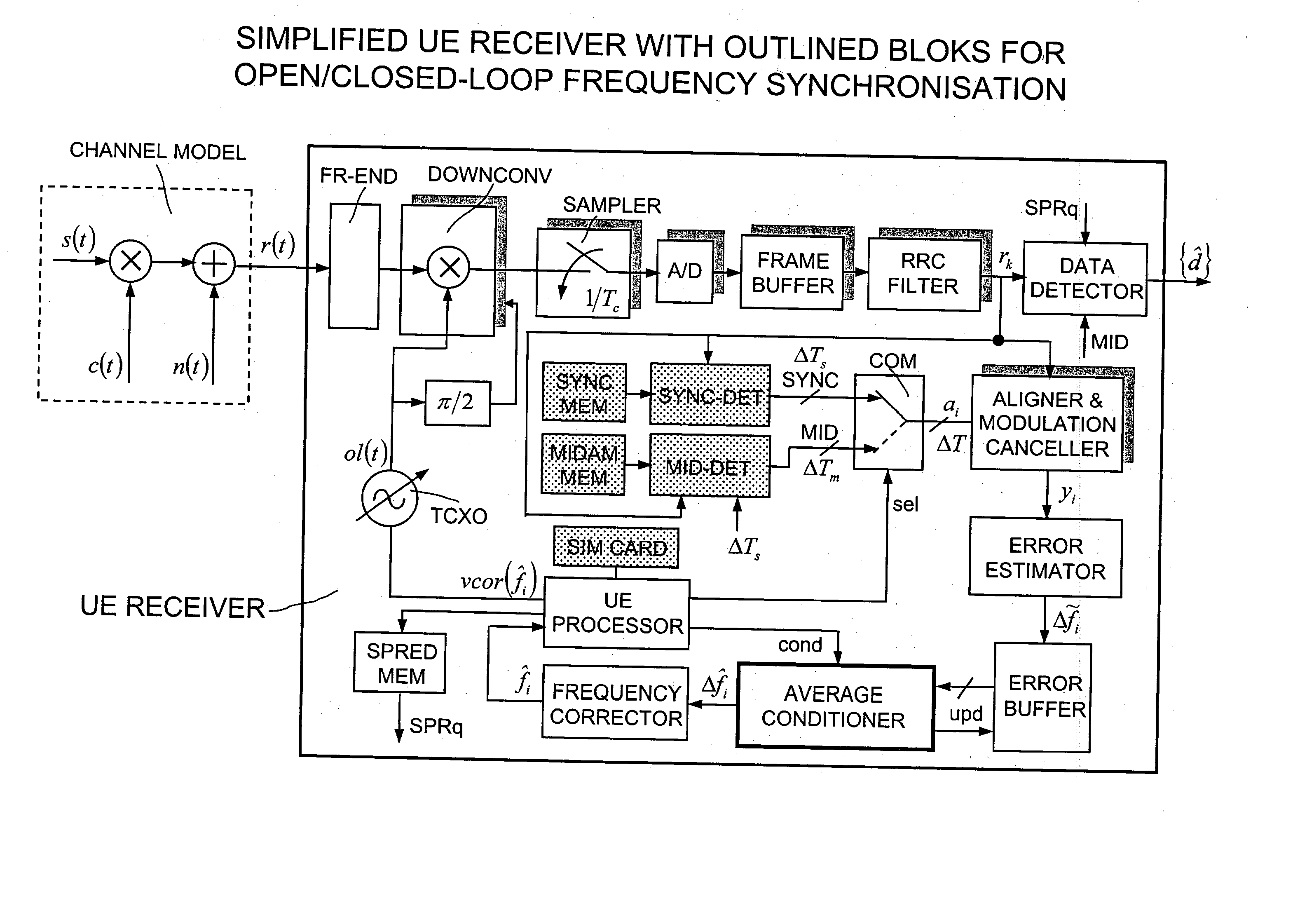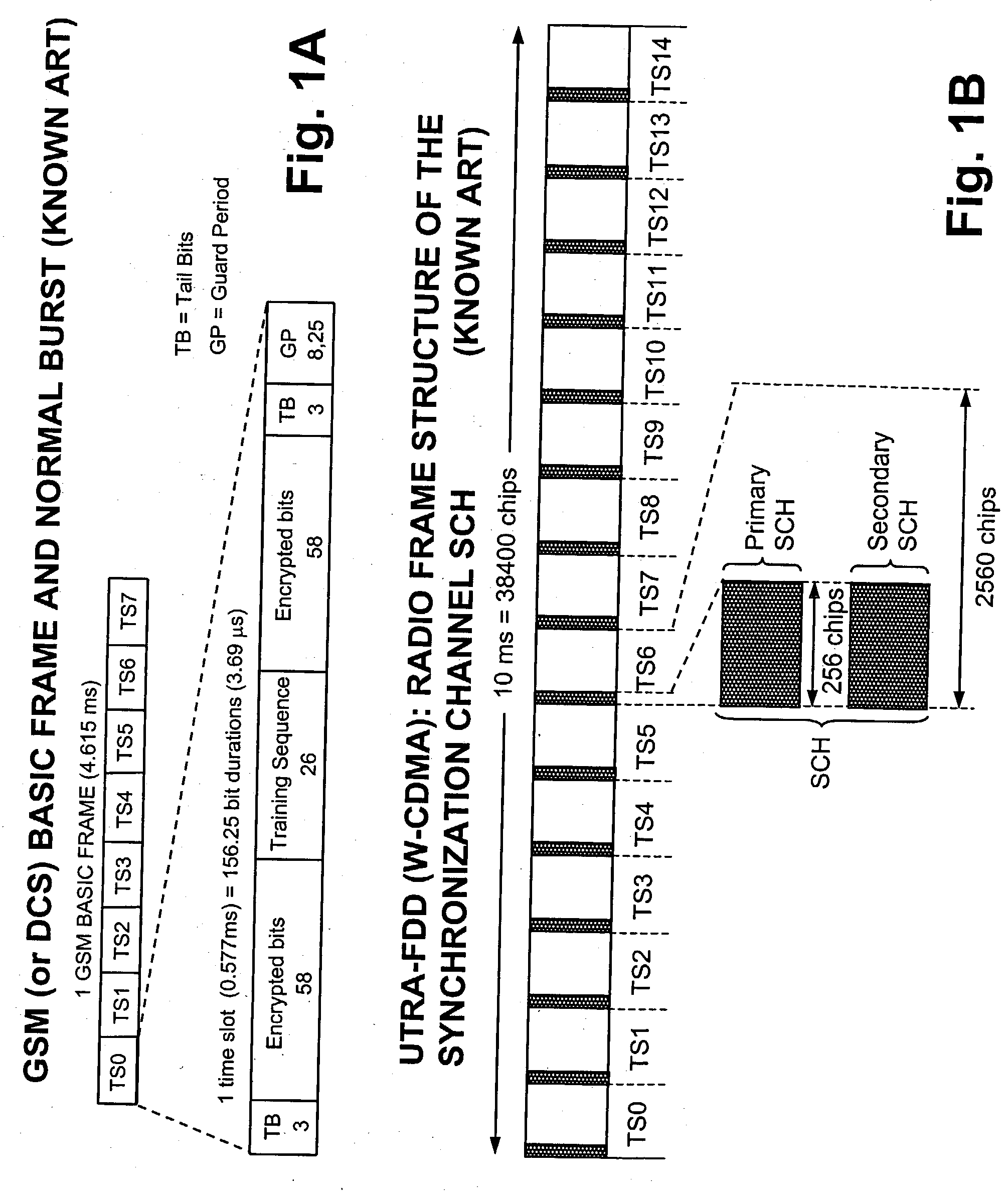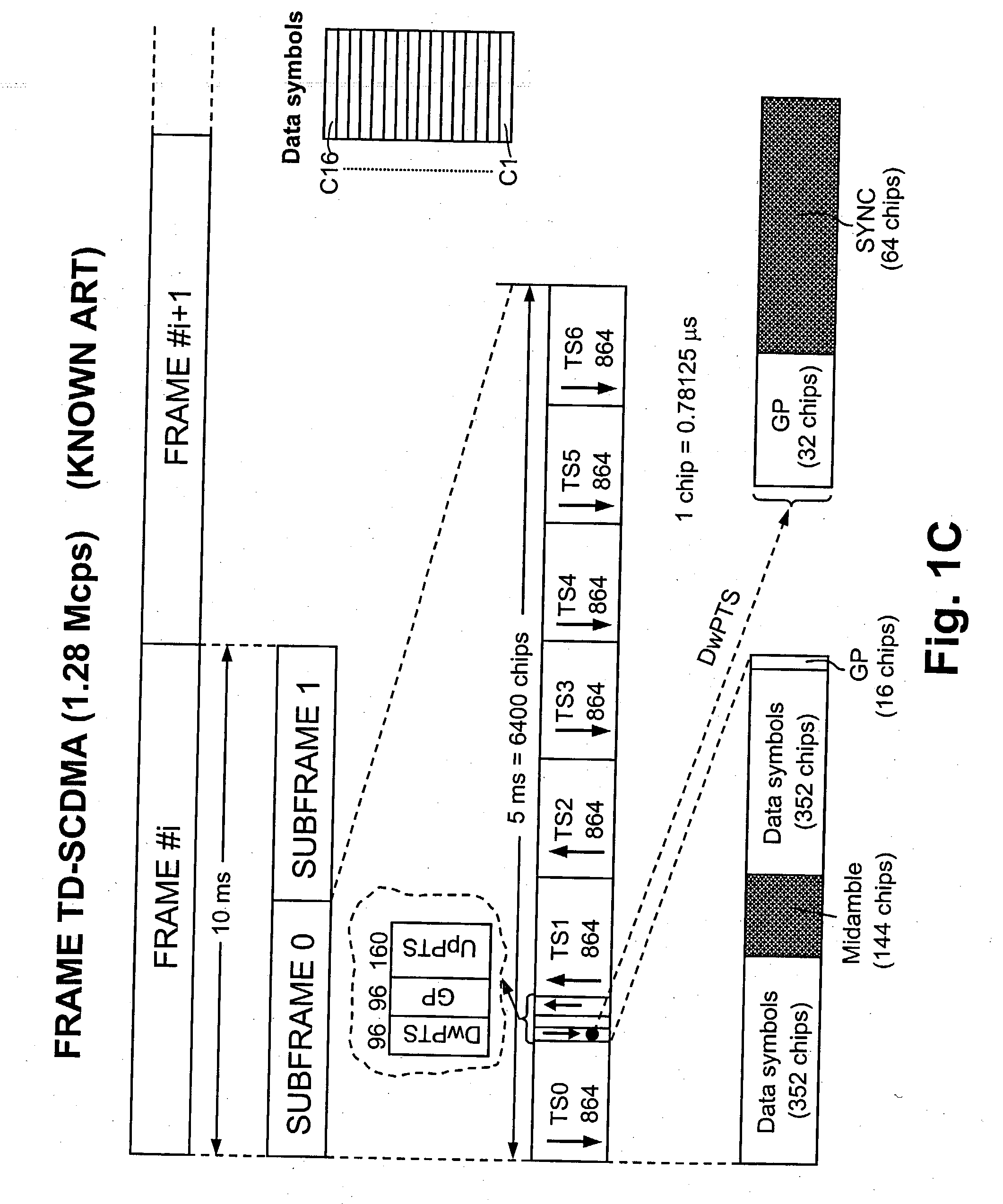Data aided frequency synchronisation in cellular mobile equipments
- Summary
- Abstract
- Description
- Claims
- Application Information
AI Technical Summary
Benefits of technology
Problems solved by technology
Method used
Image
Examples
Embodiment Construction
[0051] With reference to FIG. 6 a functional block diagram of an UE RECEIVER suitable to perform the frequency synchronisation method of the invention is reproduced. The depicted architecture although referred to the TD-SCDMA is widely general and, except for some details (i.e. SPRq, SYNC), it could be also referred to an MS receiver of GSM type. For the sake of completeness the channel, as seen at the reception antenna, is also modelled in FIG. 6. In the considered channel model s(t) indicates the transmitted signal, c(t) is a channel fading process (i.e Rayleigh), and n(t) is used to model the thermal noise and the multi-user interference (both intra-cell and inter-cell). At the input of the UE RECEIVER is visible a reception signal r(t) which reaches a front-end FR-END block including a band-pass RF filter and a low-noise receiving amplifier (both not visible). At the output of the front-end the RF signal is down-converted to baseband by a DOWNCONV block including an analog mixer...
PUM
 Login to View More
Login to View More Abstract
Description
Claims
Application Information
 Login to View More
Login to View More - R&D
- Intellectual Property
- Life Sciences
- Materials
- Tech Scout
- Unparalleled Data Quality
- Higher Quality Content
- 60% Fewer Hallucinations
Browse by: Latest US Patents, China's latest patents, Technical Efficacy Thesaurus, Application Domain, Technology Topic, Popular Technical Reports.
© 2025 PatSnap. All rights reserved.Legal|Privacy policy|Modern Slavery Act Transparency Statement|Sitemap|About US| Contact US: help@patsnap.com



